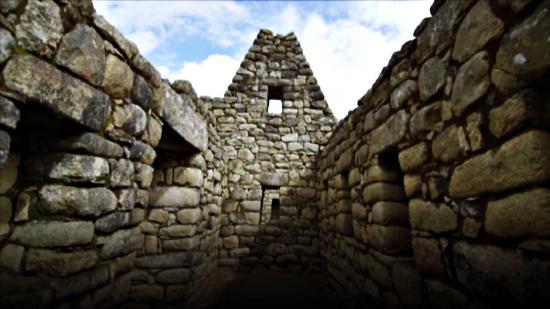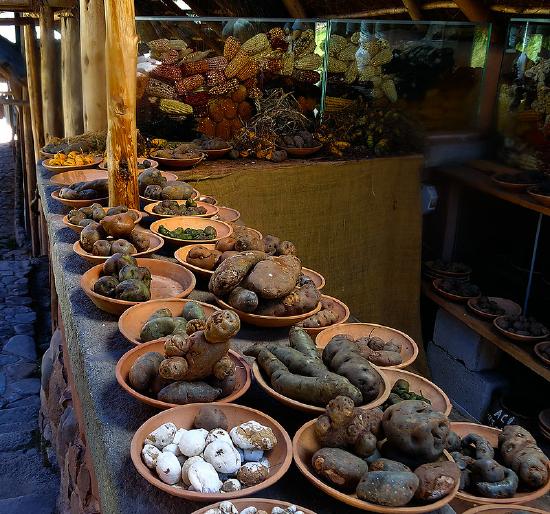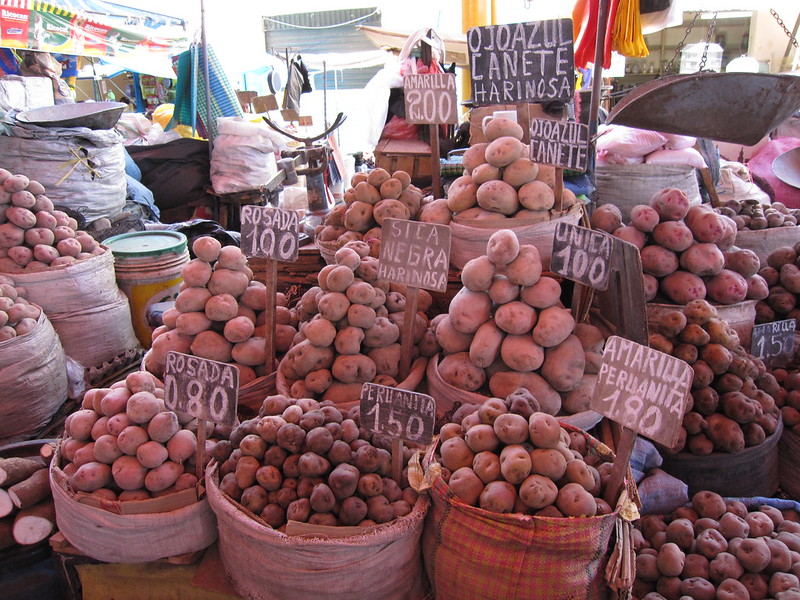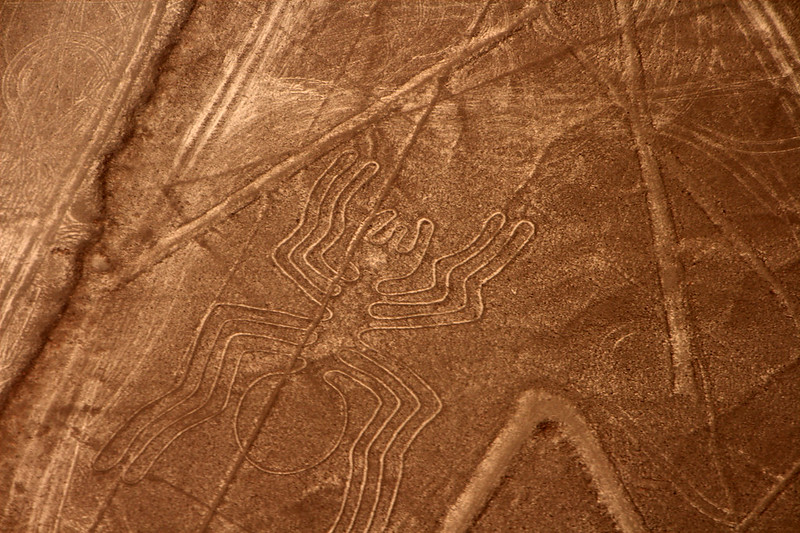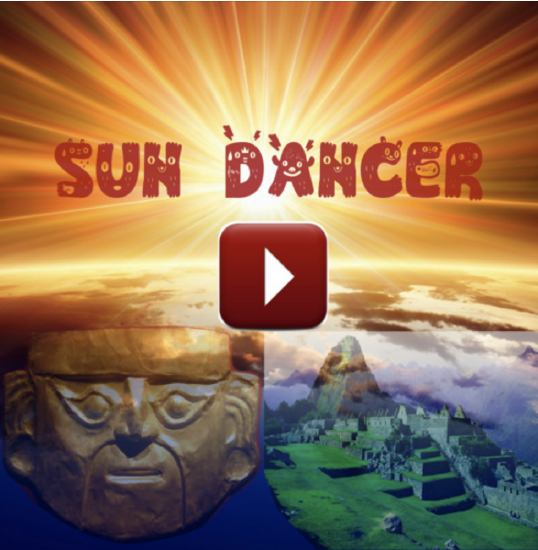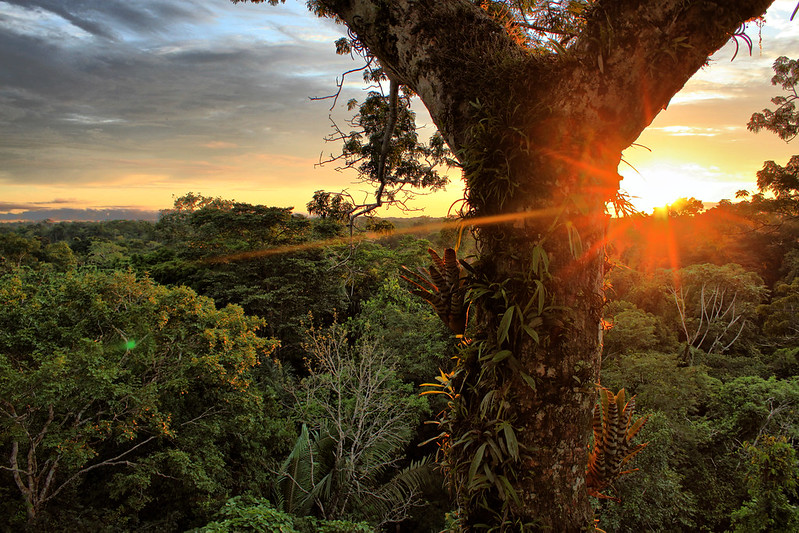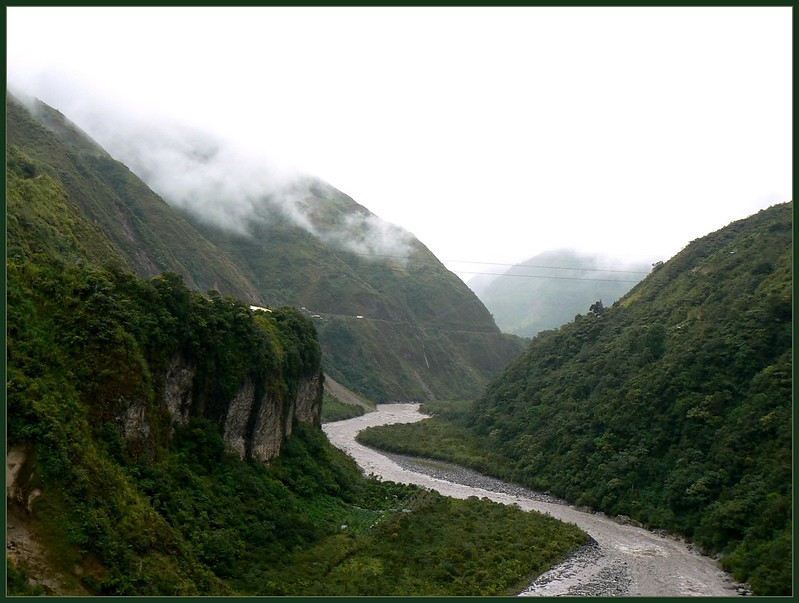1.2: Perú
- Page ID
- 105105
\( \newcommand{\vecs}[1]{\overset { \scriptstyle \rightharpoonup} {\mathbf{#1}} } \)
\( \newcommand{\vecd}[1]{\overset{-\!-\!\rightharpoonup}{\vphantom{a}\smash {#1}}} \)
\( \newcommand{\id}{\mathrm{id}}\) \( \newcommand{\Span}{\mathrm{span}}\)
( \newcommand{\kernel}{\mathrm{null}\,}\) \( \newcommand{\range}{\mathrm{range}\,}\)
\( \newcommand{\RealPart}{\mathrm{Re}}\) \( \newcommand{\ImaginaryPart}{\mathrm{Im}}\)
\( \newcommand{\Argument}{\mathrm{Arg}}\) \( \newcommand{\norm}[1]{\| #1 \|}\)
\( \newcommand{\inner}[2]{\langle #1, #2 \rangle}\)
\( \newcommand{\Span}{\mathrm{span}}\)
\( \newcommand{\id}{\mathrm{id}}\)
\( \newcommand{\Span}{\mathrm{span}}\)
\( \newcommand{\kernel}{\mathrm{null}\,}\)
\( \newcommand{\range}{\mathrm{range}\,}\)
\( \newcommand{\RealPart}{\mathrm{Re}}\)
\( \newcommand{\ImaginaryPart}{\mathrm{Im}}\)
\( \newcommand{\Argument}{\mathrm{Arg}}\)
\( \newcommand{\norm}[1]{\| #1 \|}\)
\( \newcommand{\inner}[2]{\langle #1, #2 \rangle}\)
\( \newcommand{\Span}{\mathrm{span}}\) \( \newcommand{\AA}{\unicode[.8,0]{x212B}}\)
\( \newcommand{\vectorA}[1]{\vec{#1}} % arrow\)
\( \newcommand{\vectorAt}[1]{\vec{\text{#1}}} % arrow\)
\( \newcommand{\vectorB}[1]{\overset { \scriptstyle \rightharpoonup} {\mathbf{#1}} } \)
\( \newcommand{\vectorC}[1]{\textbf{#1}} \)
\( \newcommand{\vectorD}[1]{\overrightarrow{#1}} \)
\( \newcommand{\vectorDt}[1]{\overrightarrow{\text{#1}}} \)
\( \newcommand{\vectE}[1]{\overset{-\!-\!\rightharpoonup}{\vphantom{a}\smash{\mathbf {#1}}}} \)
\( \newcommand{\vecs}[1]{\overset { \scriptstyle \rightharpoonup} {\mathbf{#1}} } \)
\( \newcommand{\vecd}[1]{\overset{-\!-\!\rightharpoonup}{\vphantom{a}\smash {#1}}} \)
Material originally created by M. Barrio De Mendoza, K Gutiérrez, H.Ho, C. Lin, & A Stere Lugo and edited by Jialing Liu with additional graphics and videos added by Kim Armstrong for this version.
Mapa
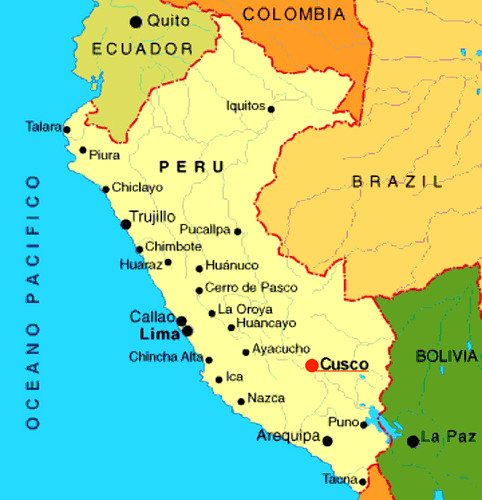
"Mapa del Perú (map of Peru)" by thejourney1972 (South America addicted), Licensed under CC BY 2.0
Datos importantes
Nombre oficial: República de Perú
La capital: Lima
La ubicación: Está en Sudamérica en el área oeste del continente sudamericano
La lengua: español y lenguas indígenas: quechua, aimara, y otros
La moneda: El sol
Ciudades importantes: Arequipa, Trujillo, Cuzco, Iquitos
La economía: La minería, la agricultura, el petróleo y el gas natural
El clima: Es muy variado dependiendo de la altura (height) y el área geográfica. En la cordillera de Los Andes (Andes mountains) hace mucho frío y en los valles el clima es más templado (mild).
Datos interesantes
Machu Picchu. Son unas ruinas que están situadas a pocas horas de Cuzco (la capital del Imperio Incaico). Por la belleza y su entorno natural estas ruinas han sido declaradas Patrimonio de la Humanidad por la UNESCO.
|
"Machu Picchu Lima Cusco Peru 300" by WasifMalik is marked with CC0 1.0 |
"Machu Picchu, Cusco, Perú. Aspecto de una vivienda" by MI PERÚ is marked with CC PDM 1.0 |
La papa. Increíblemente existen más de 4.000 especies de papas nativas en el Perú. El Centro Internacional de la Papa está localizado en Lima, Perú. Es un centro de investigación que estudia la papa y otros tubérculos (tuber). En esta institución se estudia científicamente soluciones innovadoras para el acceso al alimento (food) y reducir la pobreza (poverty). El centro también se dedica en mejorar los recursos naturales y el ecosistema.
|
"Potato ['papa'] cultivars in Peru" by gjshepherd_br. License: CC BY-NC-SA 2.0 |
"potatoes..." by Jagubal. License: CC BY-NC-ND 2.0 |
Líneas de Nazca. Estas líneas son geoglifos en la arena de la zona desértica (desert) de la costa del Perú. Los antropólogos creen que la gente de los pueblos Nasca las construyó hace unos 1500 años, y todavía los expertos discuten el propósito de los dibujos. ¿Tenían una función astrónomica? ¿Podían ser un tipo de calendario? Más recientemente los investigadores han rechazado la hipótesis arqueoastrónomica y plantean que están relacionadas con el agua dado el número de imagenes representando la fertilidad o el agua en la cultura peruana. Los expertos creen que la gente conducía las lineas para llegar a unos lugares donde se hacían los ritos a los dioses para que les dieran la lluvia. Desde el aire puedes apreciar animales como una serpiente, una araña, un mono y hasta una ballena entre otros animales En 1995 La UNESCO las declararon como sitio del Patrimonio Mundial.
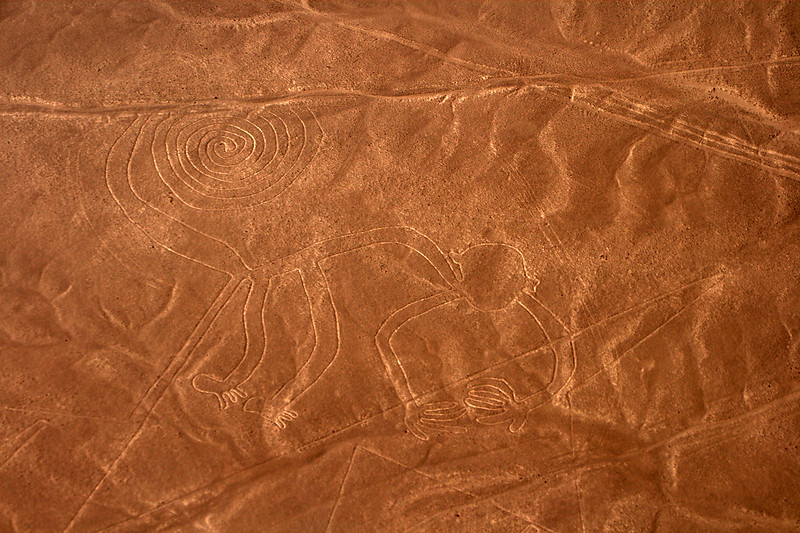 "Nasca Lines - The monkey" by Christian Haugen is licensed under CC BY 2.0 "Nasca Lines - The monkey" by Christian Haugen is licensed under CC BY 2.0 |
"Nasca Lines - Spider" by Christian Haugen is licensed under CC BY 2.0 |
Música Andina. La música andina tiene instrumentos de aire como el charango, la quena, la zampoña. Esta música tiene hermosas melodías de ritmos prehispánicos. La más famosa y tradicional es El Condor Pasa. La música andina contemporánea ha evolucionado con la incorporación de nuevos instrumentos.
|
Song: El Condor Pasa Music by FILL MUCHIK (Canto Mochica) Music Link: https://bit.ly/2XokyX |
Un ejemplo más contemporaneo de la Música andina por Carlos Carty |
La Selva Amazónica. En esta selva se encuentra el río Amazonas que es el más largo del mundo y atraviesa la Amazonía. Esta región tiene una diversidad increíble de animales y plantas. Desafortunadamente, muchas especies están en peligro de extinción por la tala de árboles (deforestation), la contaminación y por la población que crece día a día.
|
"Yasuni" by sara y tzunky licensed under CC BY-NC 2.0 |
"Vertente do Rio Amazonas" by L.Marcio_Ramalho is licensed under CC BY 2.0 |
Actividad 1


.jpeg?revision=1&size=bestfit&width=486&height=351)
